This guide covers the most dangerous and commonly encountered toxic mushrooms on Vancouver Island and throughout the Pacific Northwest.
These species cause the majority of serious mushroom poisonings in our region, ranging from severe gastrointestinal illness to organ failure and death.
Looking for edible mushrooms instead?
Warning: This list is NOT exhaustive. The majority of mushrooms are not edible! Assume any unknown mushroom is poisonous.
Funeral Bell (Deadly galerina)
Galerina marginata
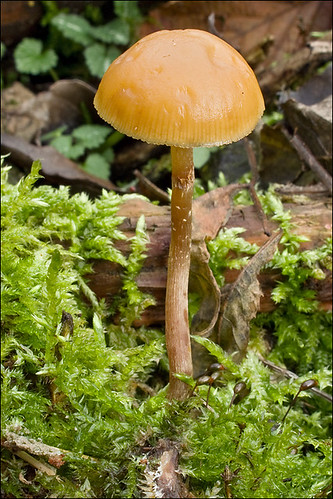
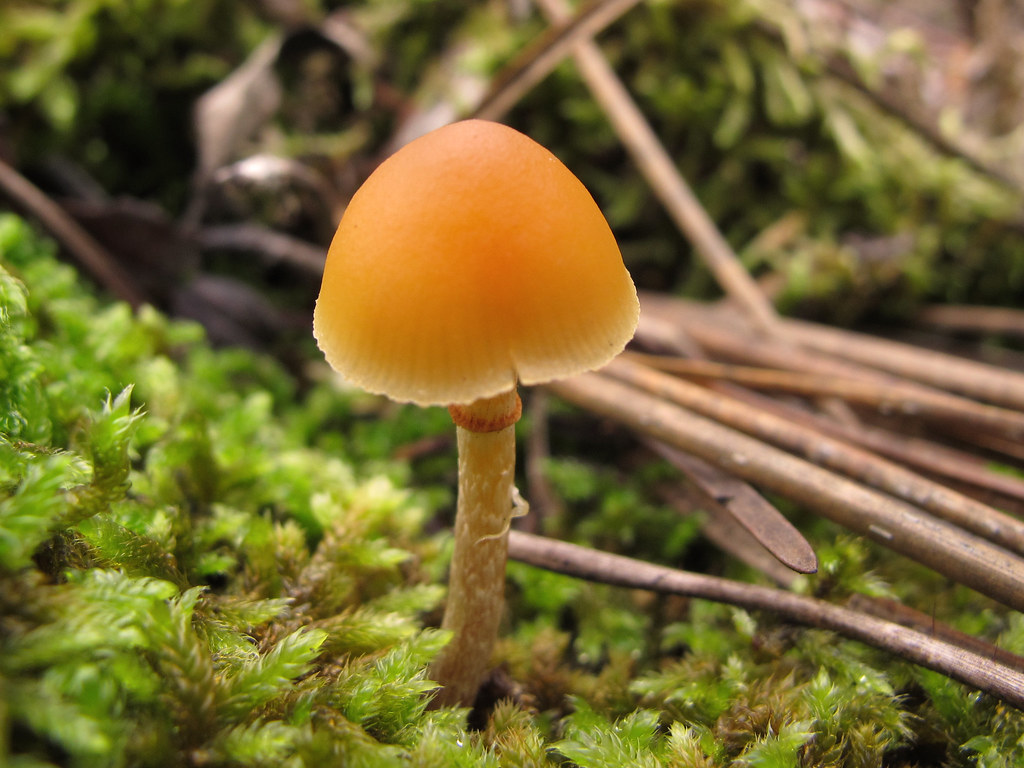
Description: Small orangey-tan to honey-brown cap that is often hygrophanous (changes color wet vs dry), brown gills, slender stem with a faint ring zone; rusty-brown spore print.
Habitat & timing: Grows on decaying conifer logs, stumps, buried wood, and woodchips; can appear year-round in mild coastal areas but is most common in fall and winter.
This is probably the most common deadly toxic mushroom on the island.
Luckily, it doesn’t resemble anything edible. However, it does bear resemblance to psychoactive mushrooms that some folks might be foraging for. If you are one of those folks… please keep this deadly look-alike in mind.
More info about Funeral bell (Deadly galerina):
- https://www.inaturalist.org/taxa/154735-Galerina-marginata
- https://en.wikipedia.org/wiki/Galerina_marginata
Death Cap
Amanita phalloides
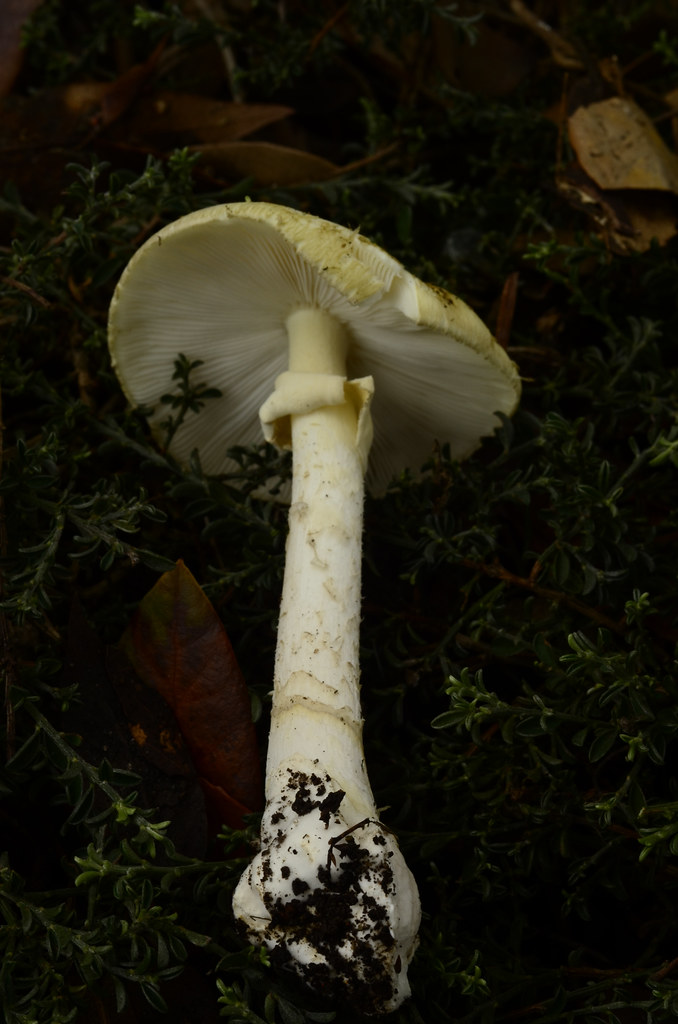
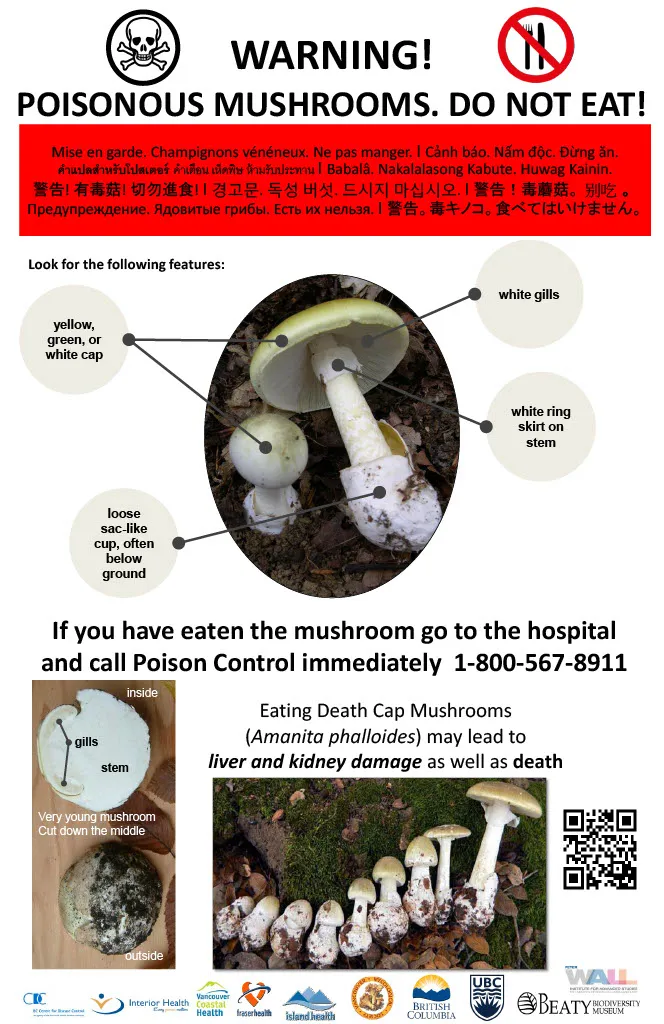
Description: Greenish to yellow-olive cap, white gills, a skirt-like ring on the stem, and a white sac-like volva at a bulbous base; white spore print.
Habitat & timing: Partners with broadleaf trees (especially oaks and other ornamentals) in urban parks and lawns; mainly seen in fall to early winter (Sept–Dec) here on Vancouver Island.
More info about Death cap:
- https://www.inaturalist.org/taxa/52135-Amanita-phalloides
- https://www.islandhealth.ca/learn-about-health/seasonal-health/death-cap-mushrooms
- https://en.wikipedia.org/wiki/Amanita_phalloides
Destroying Angel (Western destroying angel)
Amanita ocreata
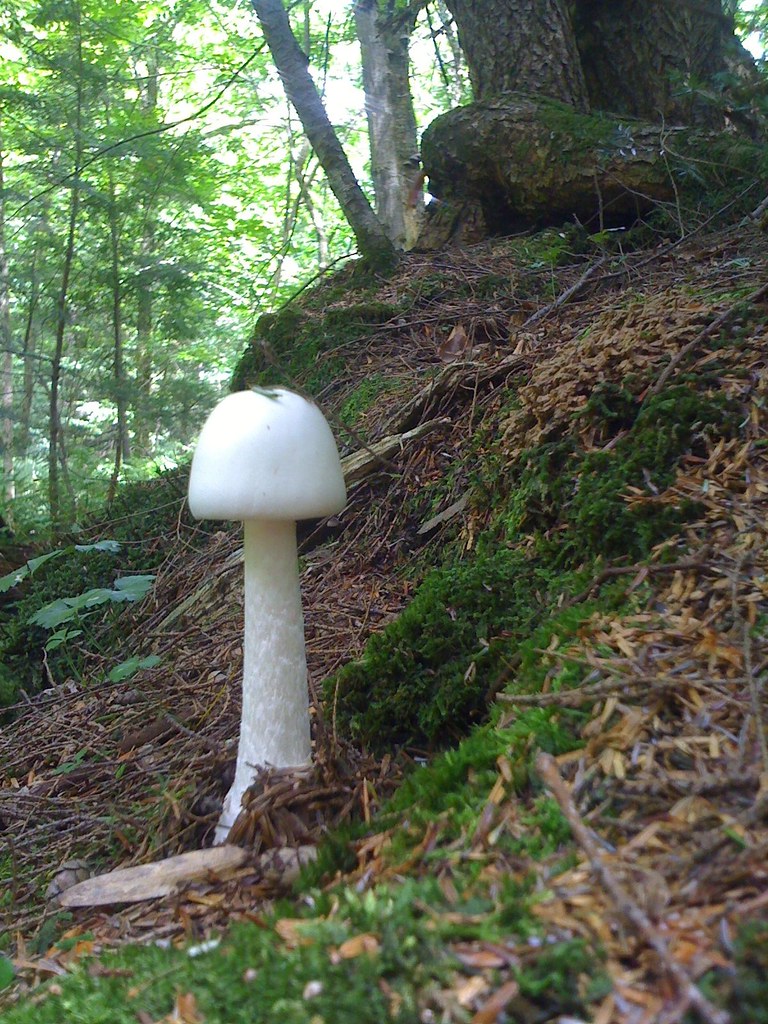
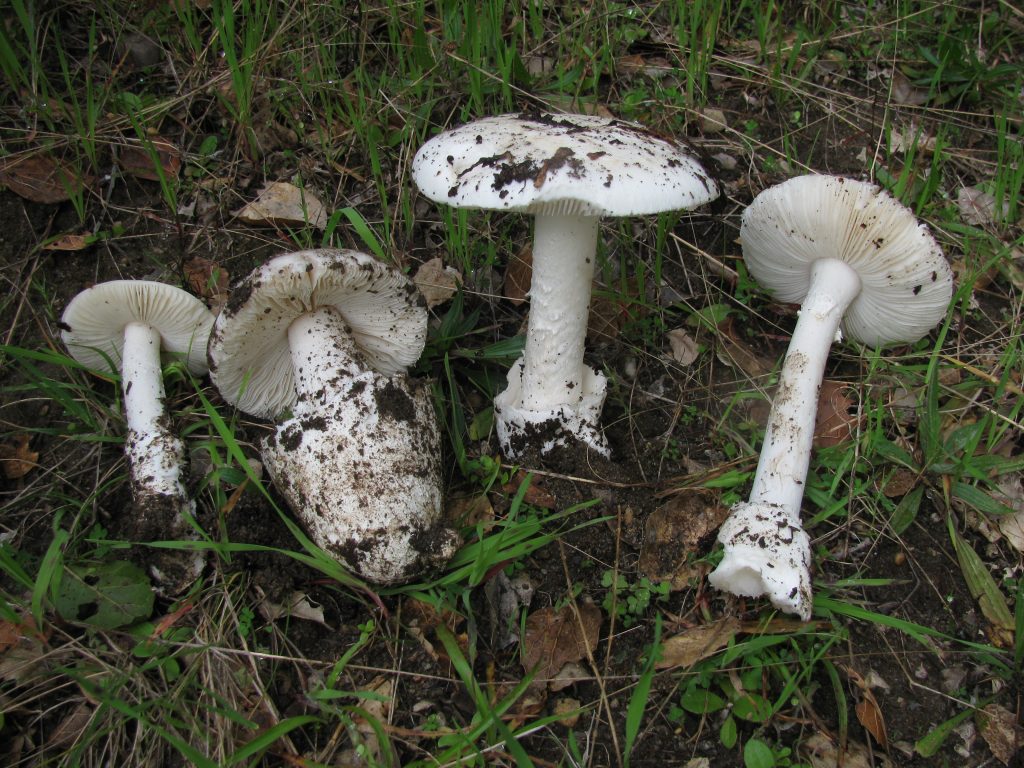
Description: Pure white to ivory cap, white gills, a skirt-like ring on the stem, and a white sac-like volva at a bulbous base; smooth cap that may develop a slightly buff center with age.
Habitat & timing: Partners with oaks (especially Garry oak) and other hardwoods in woodlands, parks, and edges; fruits mainly late winter to spring (Feb–May) on southern Vancouver Island, but also occasionally in the fall/winter.
While reports of this mushroom are infrequent on Vancouver Island, it’s still important for foragers to keep in mind, especially those on the south island.
More info about Destroying angel (Western destroying angel):
- https://www.inaturalist.org/taxa/67356-Amanita-ocreata
- https://en.wikipedia.org/wiki/Amanita_ocreata
Fly Agaric Amanita
Amanita muscaria
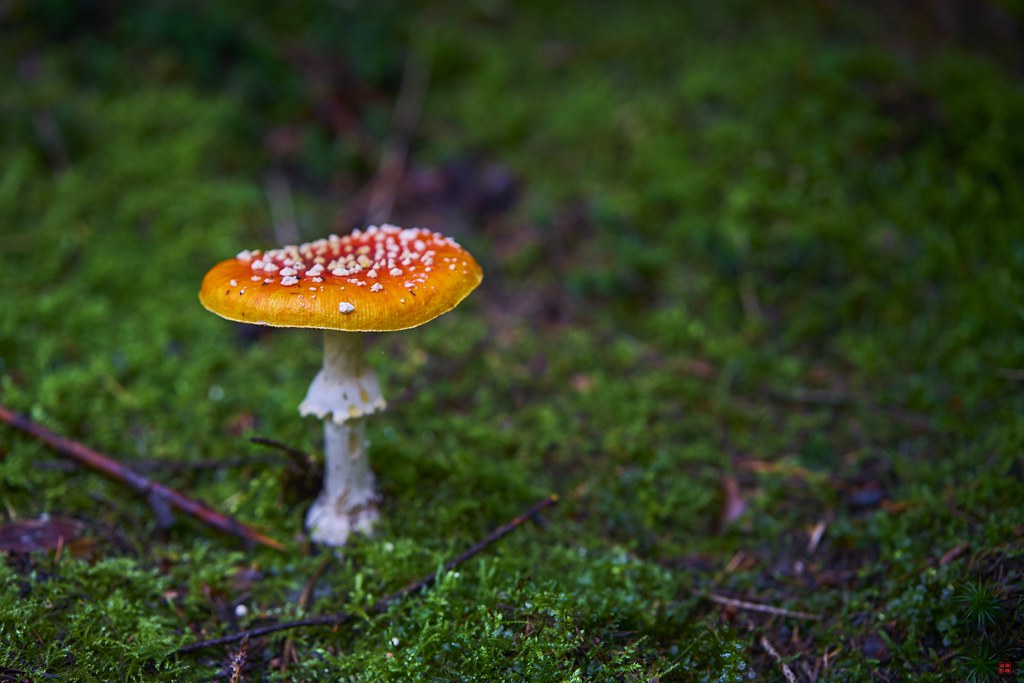
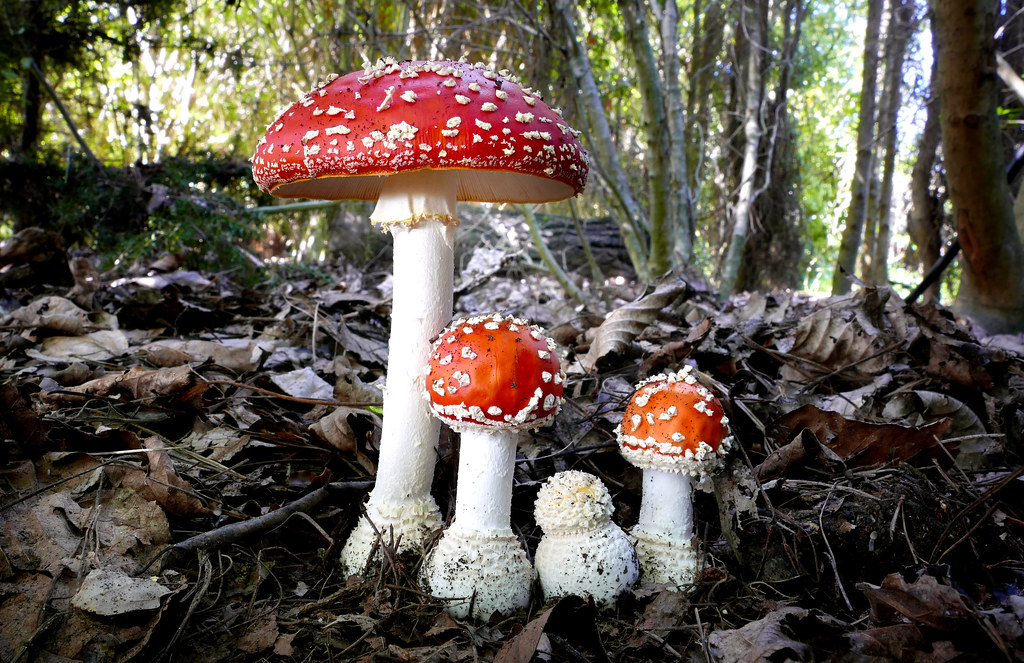
Description: Bright red to orange cap with white warts, white gills, a ring on the stem, and a bulbous base; iconic appearance.
Habitat & timing: With conifers and birch in forests and parks; typically fruits late summer through fall on Vancouver Island.
Toxicity: Contains compounds that can cause delirious states of consciousness. Generally avoided by folks who do engage in psychedelics as the “high” is stated to be not pleasant.
The toxic compounds can be removed with special preparation — however… it’s still recommended to avoid because it is theorized that Amanita muscaria hybridizes with more toxic related species such as gemmata and pantherina.
More info about Fly agaric:
- https://www.inaturalist.org/taxa/48715-Amanita-muscaria
- https://en.wikipedia.org/wiki/Amanita_muscaria
Western Panther Cap
Amanita pantherinoides
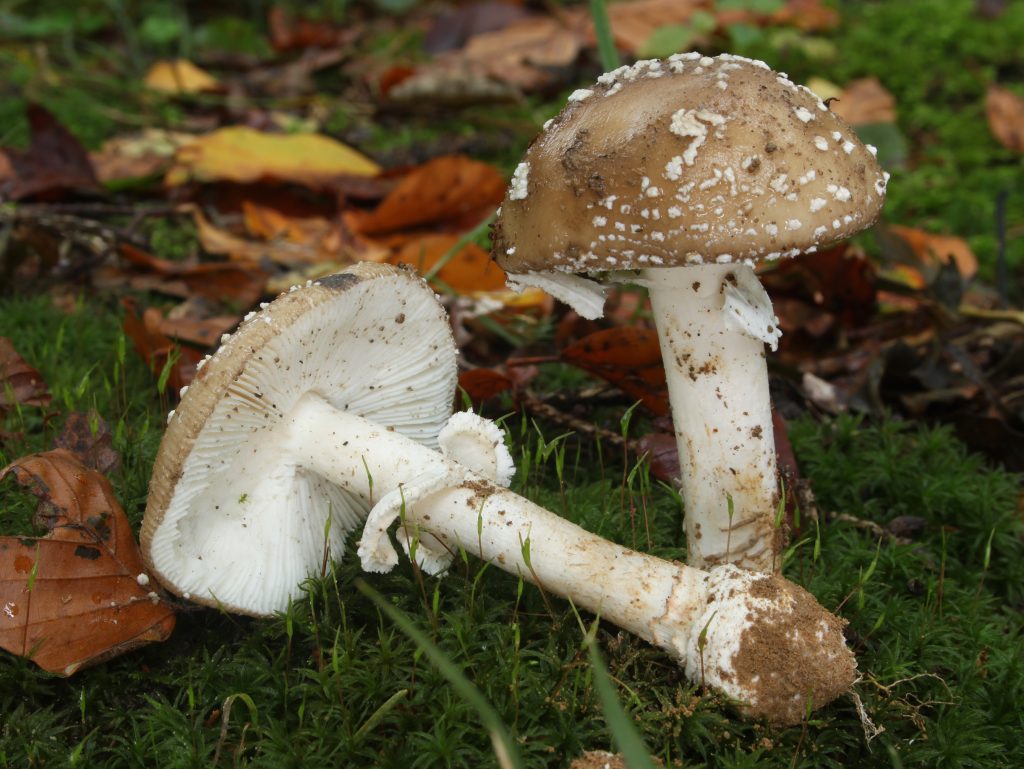
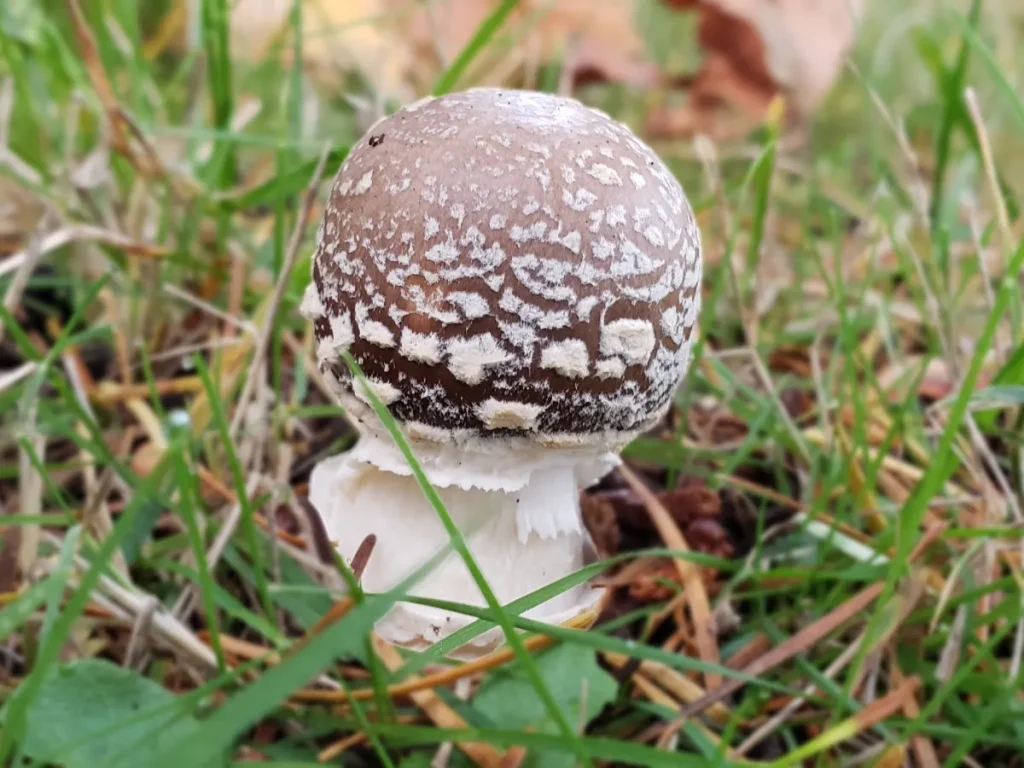
Description: Brown cap with white warts, white gills, a skirt-like ring on the stem, and a bulbous base with distinct rim-like bands (volva); white spore print.
Habitat & timing: Ectomycorrhizal with conifers and hardwoods in forests and parks; can fruit in the spring or fall on Vancouver Island.
More info about Panther cap:
False Morels & Lookalikes
Gyromitra esculenta, Paragyromitra infula, Helvella vespertina
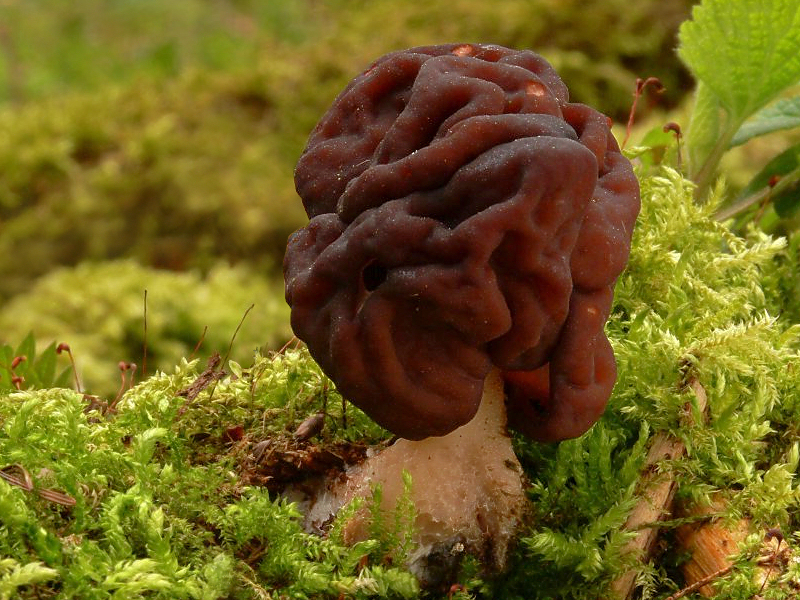
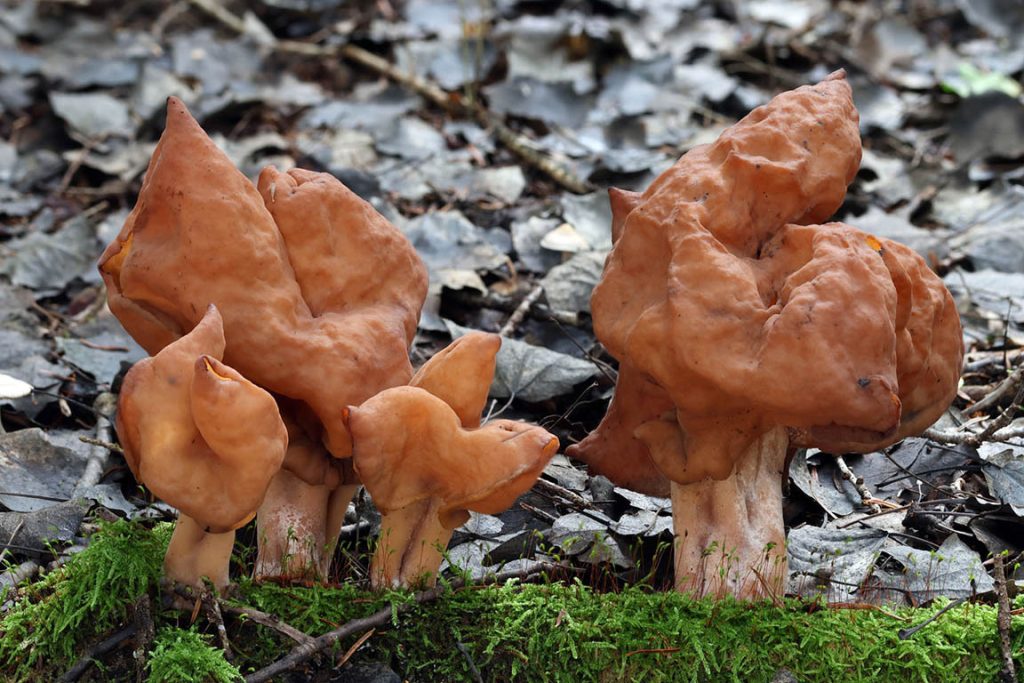
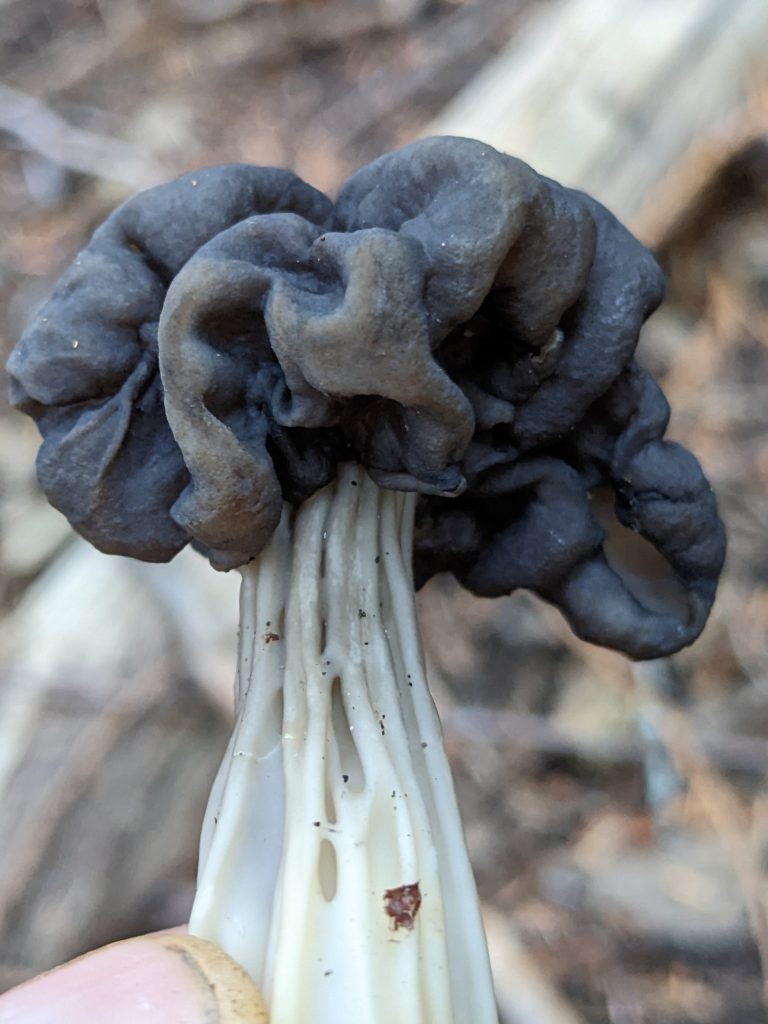
Description: There are a variety of mushrooms with brain-like, convoluted caps with hollow stems; these can resemble true morels from a distance or by novice foragers.
Habitat & timing: On the side of trails, sandy soils, open conifer woods, recent cuts and road edges; Gyromitra esculenta primarily a spring species (April–June) while Paragyromitra infula and Helvella vespertina are found in the fall.
More info about False morels:
- https://www.inaturalist.org/taxa/85120-Gyromitra_esculenta
- https://www.inaturalist.org/taxa/1613028-Paragyromitra-infula
- https://www.inaturalist.org/taxa/423950-Helvella-vespertina
Yellow Stainer
Agaricus xanthodermus
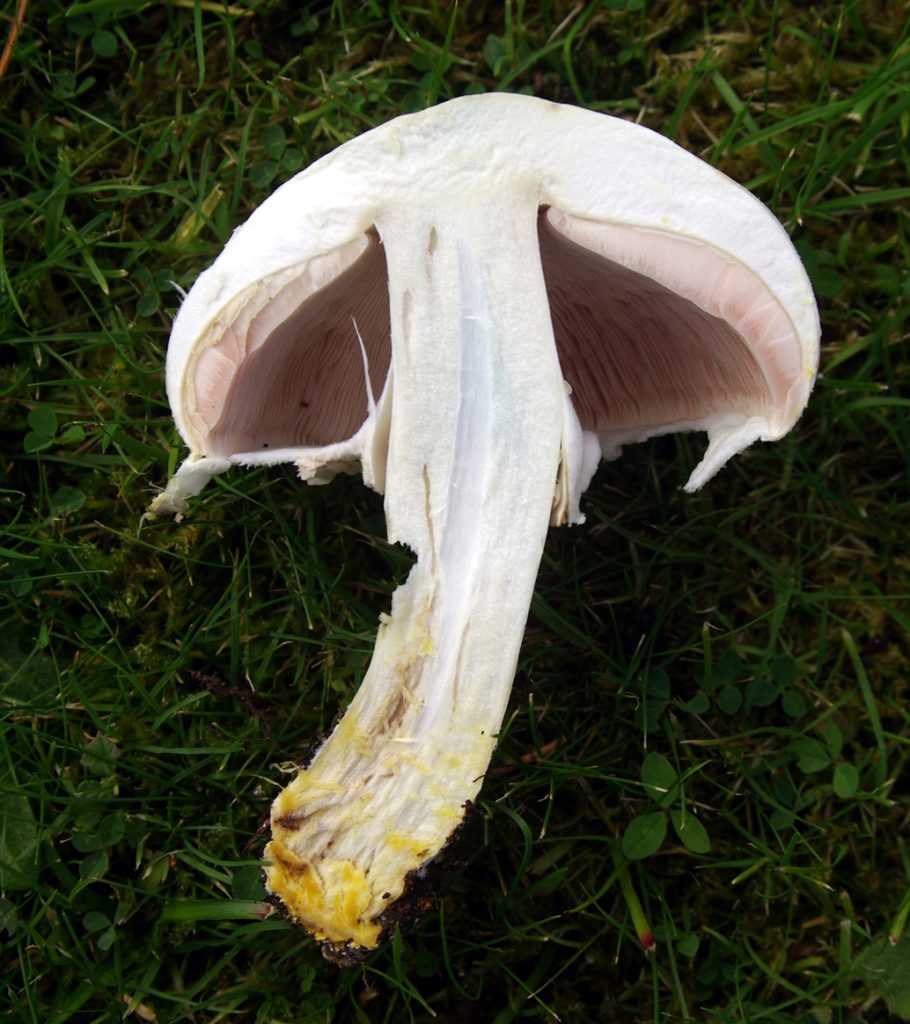
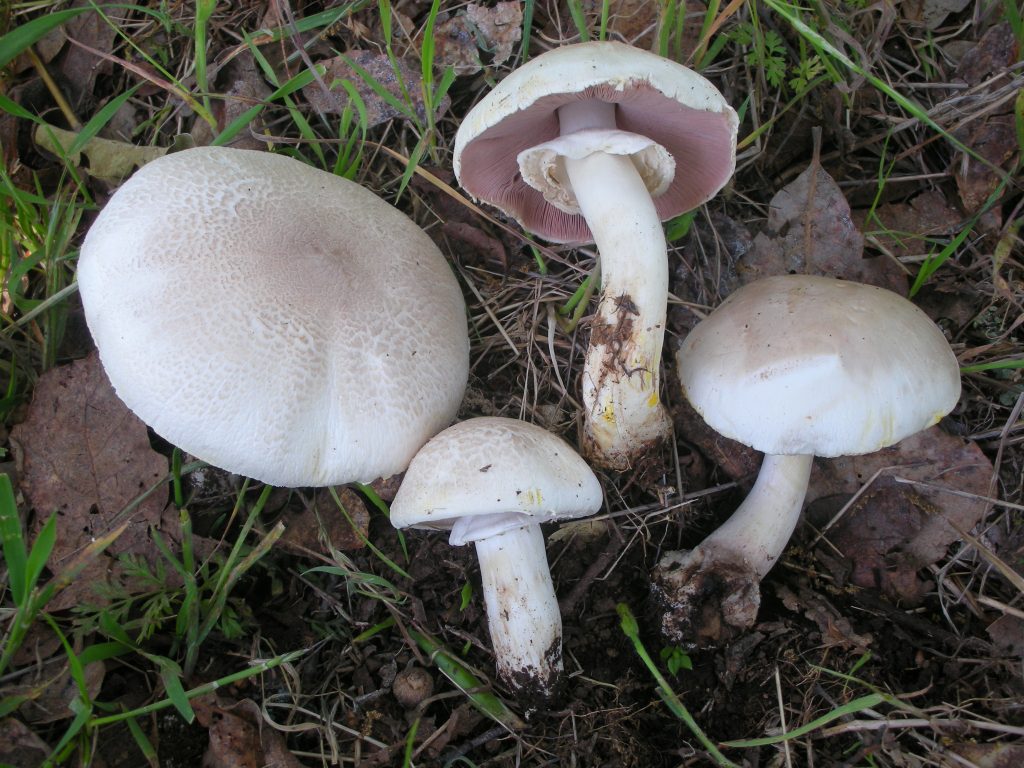
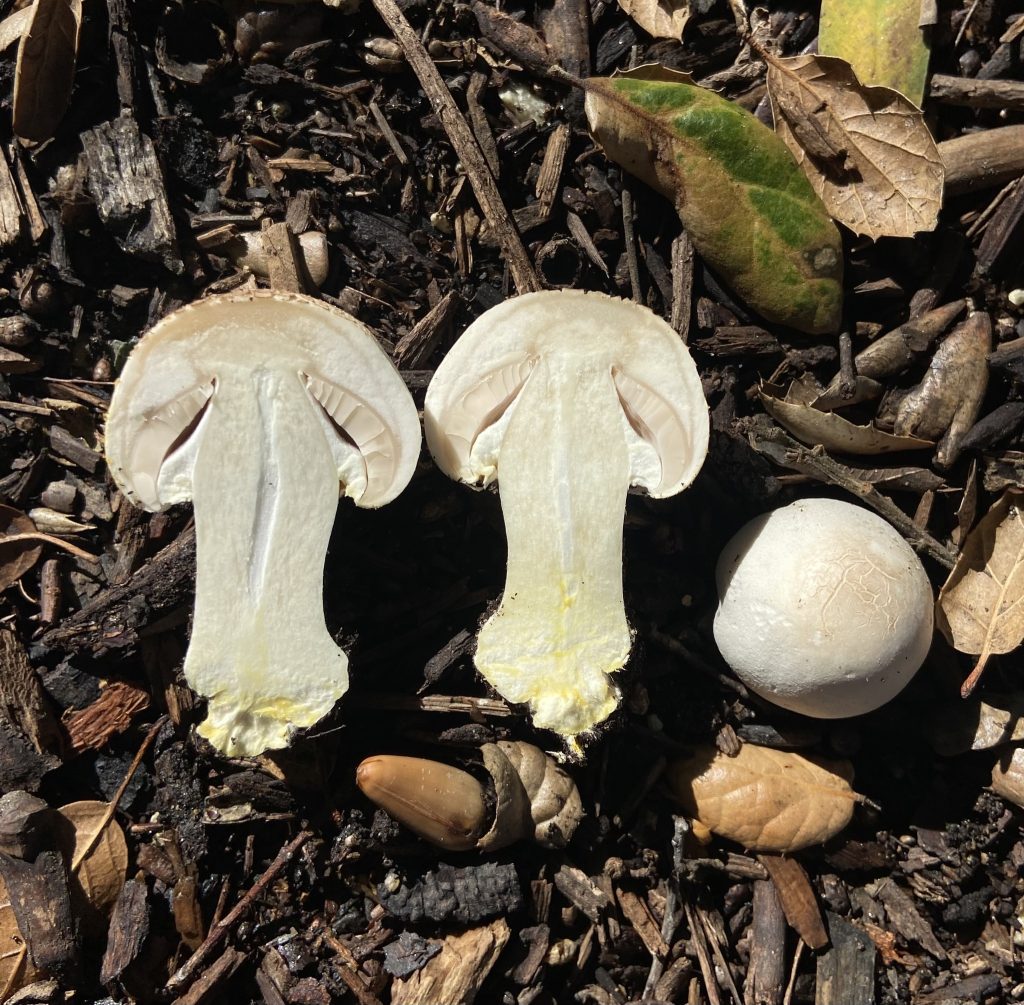
Description: White cap that bruises chrome-yellow (especially at the base), free gills that turn chocolate-brown, and a phenolic/chemical odor when cut.
Habitat & timing: Lawns, gardens, and disturbed soils in urban areas; fruits spring to fall on Vancouver Island, with peaks in moist autumn weather.
I have found these and mistook them for edible mushrooms as a young forager. Be careful when you are foraging for Agaricus species!
More info about Yellow stainer:
- https://en.wikipedia.org/wiki/Agaricus_xanthodermus
- https://www.inaturalist.org/taxa/118394-Agaricus-xanthodermus
Sulphur Tuft
Hypholoma fasciculare
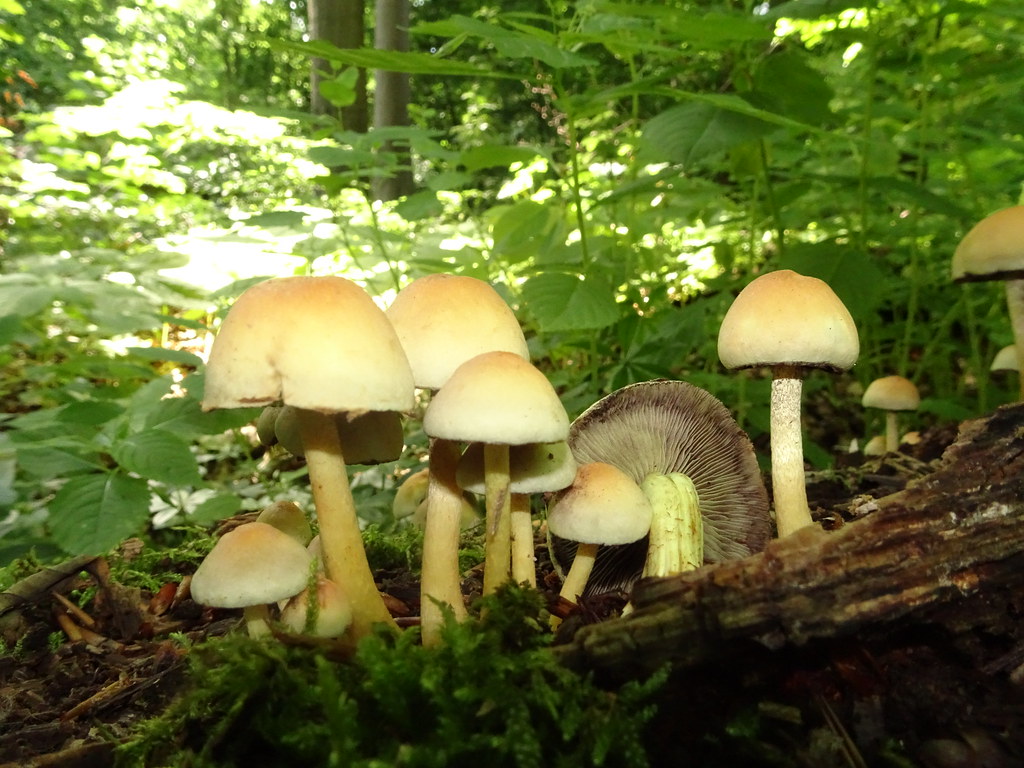
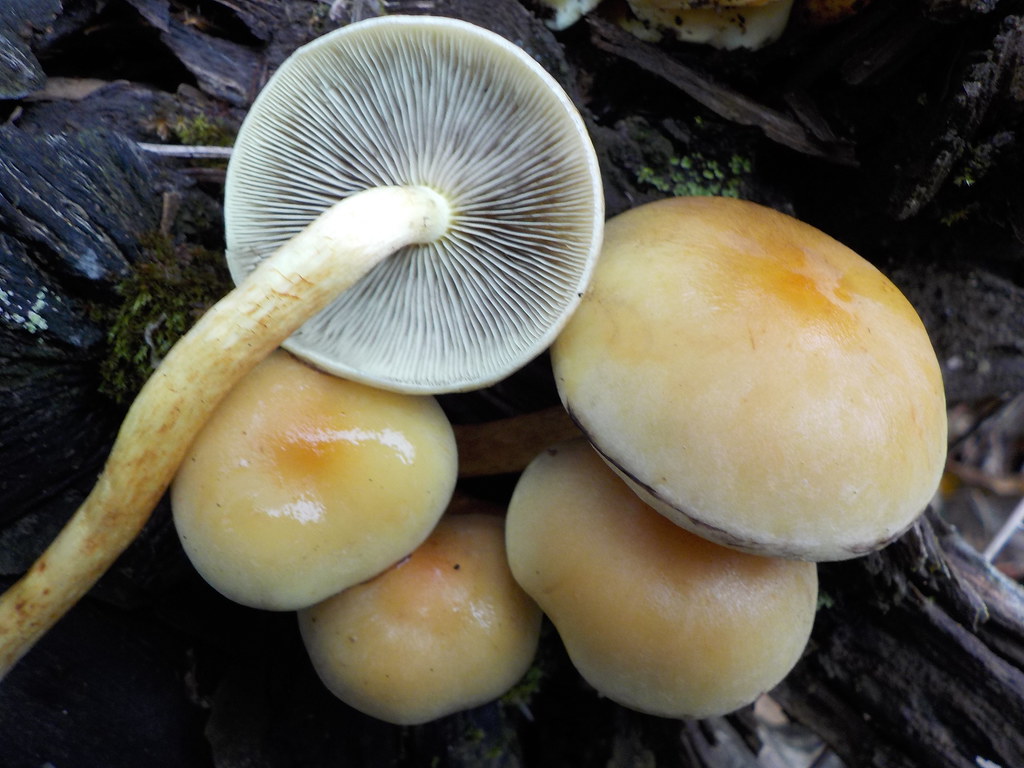
Description: Bright sulphur-yellow caps (often darker orange-brown at the center), crowded yellowish gills that turn olive-green, slender stems; grows in dense clusters.
Habitat & timing: On decaying wood (logs, stumps, buried wood) of conifers and hardwoods; very common in the fall, and sometimes year-round in mild coastal areas, peaking in fall and winter.
More info about Sulphur tuft:
- https://www.inaturalist.org/taxa/48767-Hypholoma-fasciculare
- https://en.wikipedia.org/wiki/Hypholoma_fasciculare
Poison Pie
Hebeloma crustuliniforme
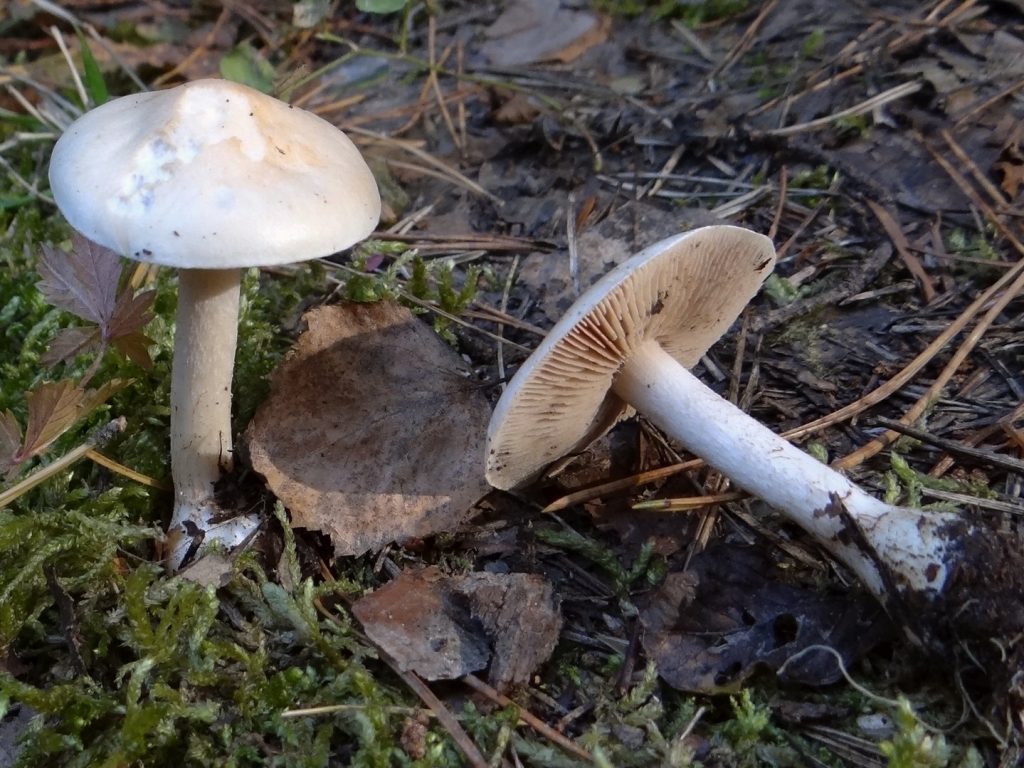
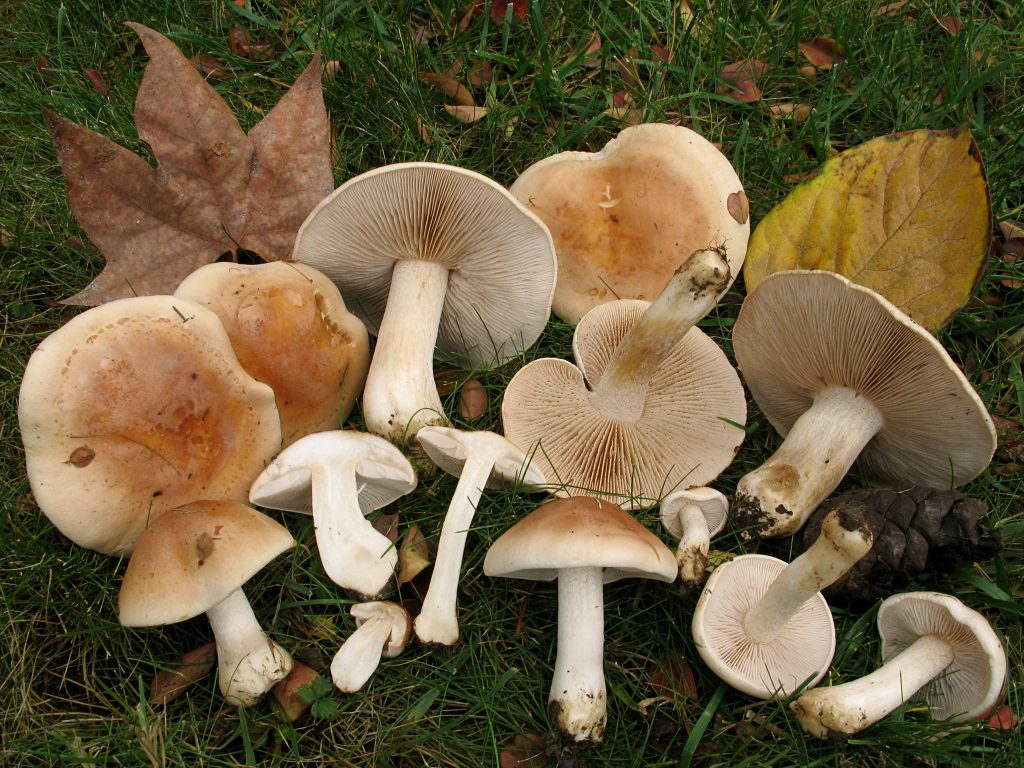
Description: Tan to honey-brown cap, sticky when moist, pale gills that become clay-brown, slender stem; often with a mealy or radish-like odor.
Habitat & timing: Partners with many trees (conifers and broadleaf) in woods, parks, and landscaped areas; mainly autumn, sometimes into early winter.
More info about Poison pie:
- https://en.wikipedia.org/wiki/Hebeloma_crustuliniforme
- https://www.inaturalist.org/taxa/194307-Hebeloma_crustuliniforme
SAFETY WARNING ⚠️
This list is NOT exhaustive and should never be used for mushroom identification in the field.
Key safety rules:
- Never eat any wild mushroom unless you are 100% certain of its identity
- When in doubt, throw it out
- Cooking does not make toxic mushrooms safe
- Even experienced foragers can make fatal mistakes
What If You Ate A Poisonous Mushroom?
If you suspect that you have consumed a poisonous mushroom, according to Island Health, here’s what to do:
- Go to the nearest hospital
- Call the BC Drug and Poison Information Centre at 1-800-567-8911 (or call 911)
- Keep a sample of the mushroom for testing
Bottom line: The vast majority of wild mushrooms are either inedible or toxic. Always assume any unknown mushroom is poisonous.
Learn about common edible mushrooms of Vancouver Island in my guide here.